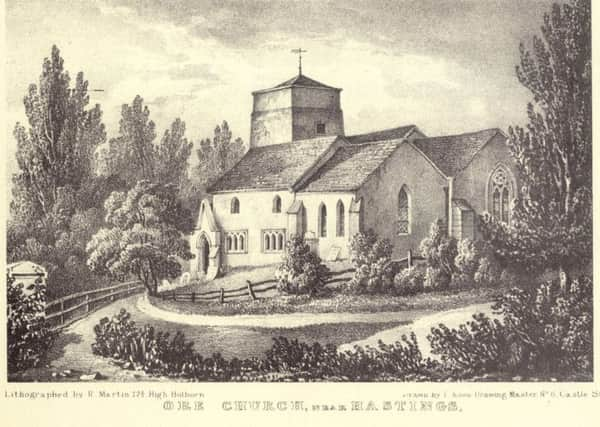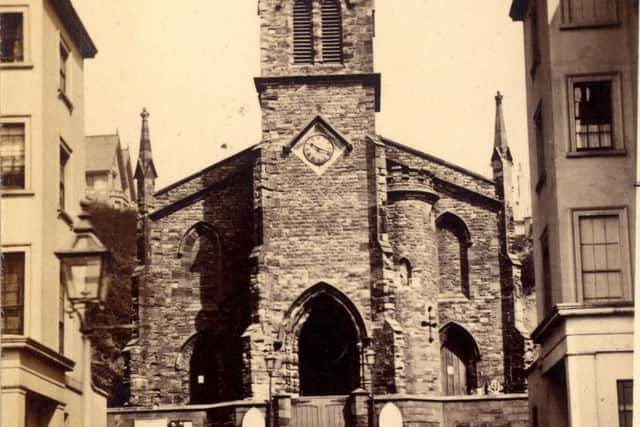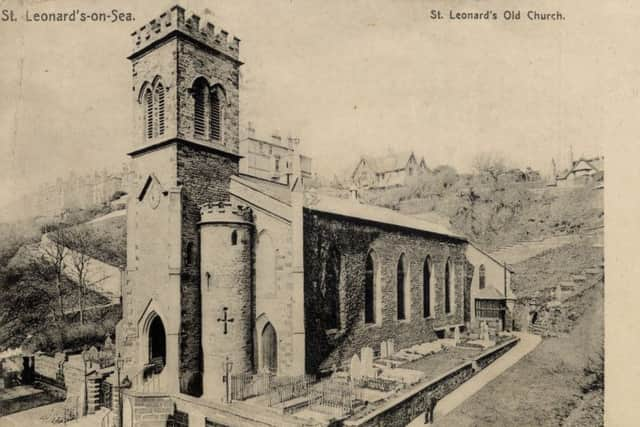The lost churches of Hastings and St Leonards


This article contains affiliate links. We may earn a small commission on items purchased through this article, but that does not affect our editorial judgement.
Hastings 120 years ago had a population that was slowly rising from 60,264 in 1901 to 62,036 ten years later and around 90,000 today. Christianity played a very important part in the lives of a large proportion of that population.
This meant that churches featured heavily in everyday life and mainstream Christian churches tended to dominate the street scene in their area making one road easily distinguishable from the next.
Advertisement
Hide AdAdvertisement
Hide AdAs tastes changed religion and churches became less important to the extent that churches built to accommodate a congregation of possibly a thousand were hosting Sunday services where only a couple of dozen parishioners were attending and the considerable cost of running the building simply couldn’t be sustained by the dwindling congregations.


The churches were deconsecrated and sold off followed, unfortunately, by demolition and consequent loss of visual amenity to the street scene. Nowadays some former churches survive with their original purpose transformed and the structure becoming residential housing or commercial institutions such as auction rooms but the streetscape is maintained.
The ancient parish church of St. Helen, Ore had, after hundreds of years, become dark and damp and, in 1869, was decided to replace it with a new parish church on a fresh site adjoining the main road about a quarter of a mile distant, much of the old church was pulled down and the materials used on the new church.
There is evidence that the old church had existed since at least 1150 and the north wall of the nave appears to be early Norman date. The new St Helens Church, replacing the old Ore Church, held its first service in 1877 and, minus its spire is still there today. The ruins of the old church are open to the public.
Advertisement
Hide AdAdvertisement
Hide AdA church had always formed part of Burton’s original designs for St Leonards and he had settled on a site at the top of West Hill. His friends however objected to the climb and so a spot was chosen midway between two blocks of houses on the Marina, but standing apart from them and off the immediate front line. The cliff had to be excavated to provide space.


The necessary Act of Parliament to build a private chapel was obtained early in 1831 and as there was a royal visitor staying in St.Leonards at the time, the Princess Sophia Matilda of Gloucester,daughter of the Duke of Gloucester and niece of George III, she
was prevailed upon to lay the foundation stone.
The building was completed in the following year and was formally consecrated and dedicated by the Bishop of Durham in 1834. The church’s end came 110 years later, on July 29th 1944 it when a flying bomb that landed on the steps demolishing the church and the houses at each end of the terrace. The nave and vestry of the replacement church were re-dedicated in 1956. The tower, with its an illuminated cross that can be seen for miles out at sea, was rededicated in 1961.
This isn’t a comprehensive list of local churches no longer enhancing the street scene, ecclesiastical buildings have disappeared from almost every district of the town.
Advertisement
Hide Ad